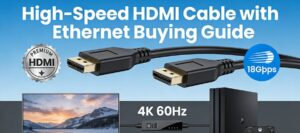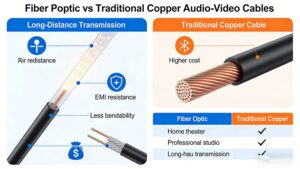In der sich ständig weiterentwickelnden Welt der Technologie spielt die Konnektivität eine entscheidende Rolle. Eine Technologie, die im Bereich der Hochgeschwindigkeitsverbindungen Wellen geschlagen hat, ist Thunderbolt. Aber was genau ist Thunderbolt, und warum ist es so besonders? Lassen Sie uns eintauchen und es herausfinden.
Einführung in Thunderbolt
Thunderbolt ist eine Hochgeschwindigkeits-Hardware-Schnittstelle, die die Art und Weise, wie wir externe Peripheriegeräte an unsere Computer anschließen, revolutioniert hat. Sie wurde gemeinsam von Intel und Apple entwickelt, mit dem Ziel, eine nahtlose und effiziente Verbindungslösung für eine Vielzahl von Geräten bereitzustellen.
Die Entwicklung von Thunderbolt begann in den späten 2000er Jahren mit dem "Light Peak"-Projekt von Intel. Die ursprüngliche Idee war, eine optische Hochgeschwindigkeitsverbindung zu schaffen. Aufgrund verschiedener technischer Herausforderungen wurden bei der ersten Thunderbolt-Generation jedoch Kupferdrähte anstelle von Glasfasern verwendet. Die erste Thunderbolt-Generation wurde 2011 mit einer Übertragungsgeschwindigkeit von bis zu 10 Gbit/s eingeführt. Dies war ein bedeutender Sprung nach vorne in Bezug auf die Datenübertragungsraten zu dieser Zeit.
Seit seiner Einführung hat Thunderbolt mehrere Iterationen durchlaufen, wobei jede neue Version erhebliche Verbesserungen bei Geschwindigkeit und Funktionalität mit sich brachte.
So funktioniert Thunderbolt
Thunderbolt kombiniert zwei Schlüsseltechnologien: PCI Express (PCIe) für die Datenübertragung und DisplayPort für die Videoausgabe. Durch die Integration dieser beiden Technologien in ein einziges Kabel ist Thunderbolt in der Lage, eine Vielzahl von Aufgaben zu bewältigen. So können beispielsweise hochauflösende Bildschirme angeschlossen, große Dateien blitzschnell übertragen und einige Geräte sogar mit Strom versorgt werden.
Es verwendet ein einziges Kabel, um mehrere Signale gleichzeitig zu übertragen. Dieses Kabel kann neben den Daten- und Videosignalen auch Gleichstrom liefern. Das bedeutet, dass Sie mit einer einzigen Thunderbolt-Verbindung nicht nur Daten zwischen Ihrem Computer und einem externen Gerät übertragen, sondern das Gerät auch mit Strom versorgen und Videosignale an einen Monitor ausgeben können.
Die Thunderbolt-Schnittstelle ist so konzipiert, dass sie Daisy-Chaining unterstützt, d. h. Sie können mehrere Geräte in einer Kette über einen einzigen Thunderbolt-Anschluss an Ihrem Computer anschließen. So können Sie zum Beispiel eine externe Festplatte, einen Monitor und einen Drucker in einer Daisy-Chain-Konfiguration über einen Thunderbolt-Anschluss anschließen.
Thunderbolt-Generationen
Im Laufe der Jahre gab es mehrere Thunderbolt-Generationen, die jeweils eine Reihe von Verbesserungen mit sich brachten.
|
Thunderbolt-Generation
|
Geschwindigkeit der Datenübertragung
|
Andere Merkmale
|
|
Thunderbolt 1
|
10 Gbit/s
|
Mini-DisplayPort-Anschluss der ersten Generation, verwendet
|
|
Thunderbolt 2
|
20 Gbit/s
|
Doppelte Geschwindigkeit von Thunderbolt 1, noch immer verwendeter Mini-DisplayPort-Anschluss
|
|
Thunderbolt 3
|
40 Gbit/s
|
Umgestellt auf USB-C-Anschluss, Unterstützung für mehrere Geräte, Leistungsabgabe bis zu 100 W
|
|
Thunderbolt 4
|
40 Gbit/s
|
Verbesserte Sicherheitsfunktionen, mehr standardisierte Docking-Unterstützung
|
|
Thunderbolt 5
|
120 Gbit/s
|
Deutlich schnellere Datenübertragung, weitere Verbesserung der Leistung
|







